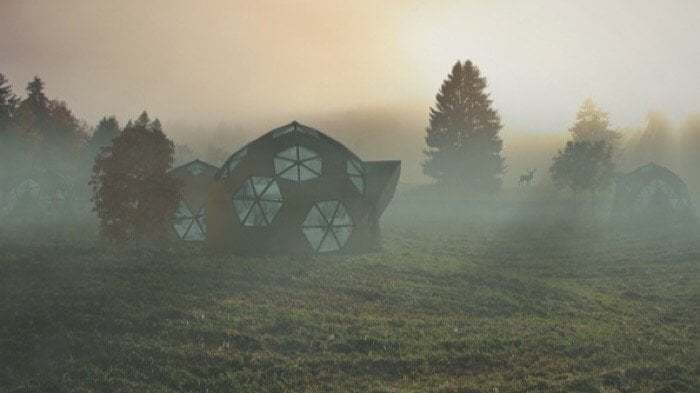Geoship considers these bioceramic domes to be the homes of the future, and with the collaboration of Zappos it starts building them to help homeless people.
In a world that is visibly worsening with increasingly frequent hurricanes and fires, two things are needed: refreshment and shelter.
The refreshment it is a policy finally aimed at containing the damage and bringing the planet back to a time freer from fossil fuels, greenhouse gases, plastics and pesticides.
The shelter it is the search for solutions, including housing, capable of withstanding the impact of the changes already triggered.
For homes in particular, it is necessary to use materials other than stone, concrete or wood as has already been done in the past. Bioceramics reduces construction costs and constitutes a barrier to climate failure.

It is the concept behind the work of Geoship, the startup that is building new bioceramic housing units. A collaboration launched with the shoe company Zappos will see the birth of a small neighborhood of geodesic domes in Los Angeles, offered free of charge to some of the city's homeless.
Homes
The material used for the lightweight domes that make up the main structure of the houses has a long list of advantages, which become more and more evident as time passes.
The ceramic is fireproof up to almost 5000°C, and reflects more than 80% of the sun's rays, counteracting heat waves. It is strong, and combined with its load-bearing structure it can withstand the fury of hurricanes. It is insect and mole proof. Shields much of the electromagnetic pollution. It absorbs little water in the event of a tsunami or flood. Its shape can withstand an earthquake. In the event of an exodus, it can be dismantled and reassembled elsewhere.

Geoship estimates an average life of 500 years for a bioceramic house. However, its material also acts as an adhesive, and in case of subsequent damage it repairs the same structure by also plugging leaks and holes.
Its construction costs are almost half lower than traditional construction. Materials can be drawn from polluted water, which provides all the world's phosphates. There is no waste of material: the shape can change in size depending on how much bioceramic can be used.
The panels that make up the structure can be made in the factory, shipped and assembled on site without new licenses and in a few days. “It's like putting together Legos,” says Morgan Bierschenk, founder of Geoship.
Interiors
Full of natural light and well ventilated, bioceramic houses have many advantages inside them too. A perfect "passive" house, heated or cooled without external energy. The materials used do not release pollutants into the air.
Architect Buckminster Fuller's ideas see the light after 70 years thanks to much more accessible materials.
The startup is building a collaborative platform to help groups of people find each other and design “neighborhoods” or entire neighborhoods and dome villages together. Even the model of Geoship itself is designed to involve customers, providing them with a participation of between 30 and 70% of the company, as real partners.
“This could reshape construction, and even capitalism a little,” they say with a certain amount of ambition in the company. But they may not be wrong: whether they are smart or not, homes will have to survive the changes and indulge in good environmental habits.
The production will see the light by the end of 2021, and if everything goes as it should go it will also be a triumph for the environment. The energy needed to build these houses is 20 times less than that needed for traditional construction.

